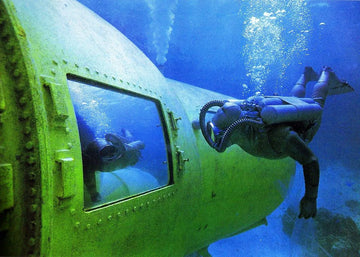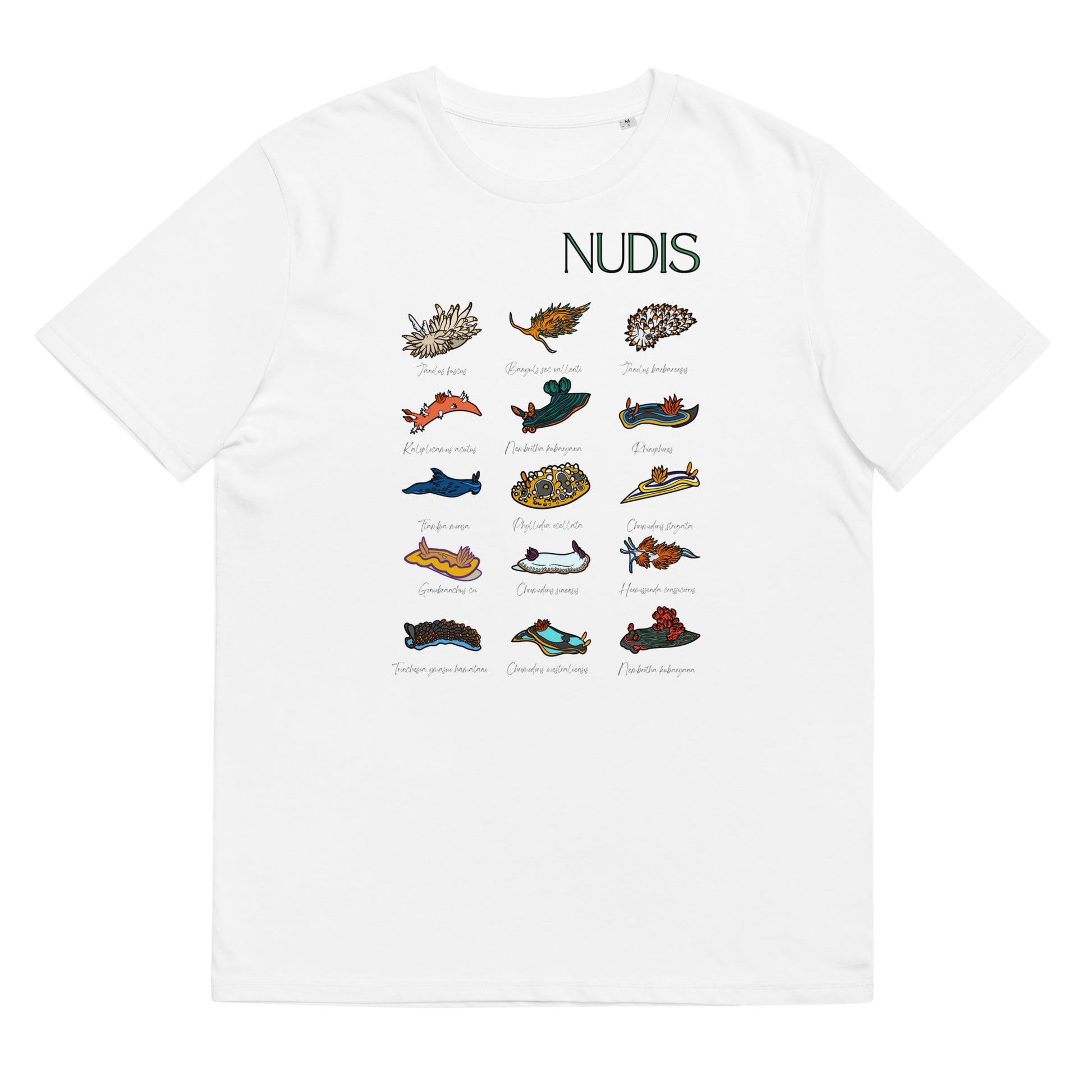Two years before the first spacewalk by Alexei Leonov, in an era when science fiction movies filled theaters with films like «Voyage to the Bottom of the Sea» or «Amphibian Man», Jacques Cousteau was placing in the Red Sea an underwater city where 10 oceanauts would live for a month, experiencing the effects of underwater pressure and lack of natural light on their own body.
It was 1963 when Cousteau’s team anchored Conshelf II in the seabed. Conshelf II was composed of a couple of underwater installations aimed to explore the human limits and broaden the knowledge of life in the ocean. This facilities, which required the work of 25 divers, miles of wiring and 2 tons of cement to secure the base on the reef, consisted of two laboratories, the first placed 32 feet deep and with room for up to 5 and the second placed at 98 feet deep designed to study two divers living for a week at great depths.
The main laboratory had large windows and was shaped like a starfish. It was the area where meetings were held, daily life took place, medical examinations to oceanauts were made and became the biology lab… all while the occupants smoked incessantly, not in vain we are talking about the 60´s …
T-Shirts for Ocean Lovers
SEE MORE T-SHIRTS FOR OCEAN LOVERS
The teams had phones to be able to talk to the Calypso and the deep laboratory and it was also connected by TV circuits with the surface. It had gauges for gas control, a kitchen and access to the sea. Another structure was used as a hangar for two submarines. The people from Conshelf II received supplies of air, water, food, energy and all other essentials for life (even a hairdresser) from the surface by another team at the legendary Calypso ship.
 Oceanauts playing chess at Conshelf II
Oceanauts playing chess at Conshelf II
Conshelf II was the second step of an experiment launched one year earlier, Conshelf I. This installation, called «Diogenes», was placed at 32 feet deep by Cousteau’s team off the coast of Marseille (France). There, two oceanauts immersed for periods of 5 hours a day for a week. The two oceanauts were examined by medical teams and later, given the success and viability of the project, the experiment secured funding for the next expedition in the Red Sea.
This expedition was funded in part by the French petrochemical industry who, along with Jacques Cousteau, hoped Conshelf II was the beginning of a series of self-sufficient undersea facilities and colonies scattered throughout the world that would serve to explore, but also exploit, submarine resources. The experiments would be useful to the petrochemical industry, who wanted to know the limits of human beings working at these depths in search of raw materials … and to Cousteau who wanted to used it to develop research on marine life in an environment as privileged as Shaab Rumi (Sudan) was.

Oceanauts placed cages placed 167 feet deep to closely study sharks
Conshelf II taught us that man can live perfectly under high water pressures for long periods of time, but despite having the physical and mental ability to do so, human beings are not meant to exist in a world without sun. In fact oceanauts in Conshelf II had to receive a 10-minute session of UV rays every day.
Conshelf II developed techniques that are currently used by NASA in zero gravity training sessions, it exhaustively studied shark behavior, with experiments using underwater cages located within 167 feet deep, and developed new technologies such as the underwater scooters (so popular today among many divers) that were used for the first time in this expedition in the Red Sea. In the field of marine biology Cousteau’s team took important steps by discovering categorizing dozens of new species, bringing many new specimens to the aquarium in Nice. They also conducted several investigations on Red Sea fauna like in the case of the giant parrotfish. This expedition also marked a turning point in underwater filming, by obtaining microscopic plankton images never seen before and also reached down and took underwater images in a journey up to 1,000 feet in a submarine, something that no one had ever achieved.

Conshelf III, the end of the adventure
Years later Cousteau publicly regretted having worked with the petrochemical industry in this project, who were more interested in exploiting the seabed at any price that in knowing more about marine life and its conservation. Still, Cousteau’s dream of having these facilities spread in different oceans in order to study the limits of human beings under the sea, but above all to lay the foundations for a huge overall underwater research project to learn to conserve marine life, didn’t stop with Conshelf II. After the success of Conshelf II, in an attempt to continue with the adventure, Cousteau developed a third version that would serve to continue testing the limits of the human being underwater. In 1965, near Nice, Conshelf III was born.

At 330 feet deep Cousteau’s team placed a room that housed six oceanauts who lived together for three weeks, putting the final touch to the great adventure of Conshelf.
T-shirts designed by divers for divers
VIEW MORE T-SHIRTS FOR DIVERS
Unfortunately, Cousteau’s goal of installing undersea bases in all of the oceans was not finally achieved and today there is only one permanent submarine base, called «Aquarius», located in the Florida Keys at 65 feet deep, which is owned by the NOAA (National Oceanic and Atmospheric Administration) that is dedicated to the study of coral, fish and aquatic plants.
CONSHELF II TODAY
Today you can visit the remains of Conshelf II through liveaboards operating in Sudan. This gives us the opportunity to enter in a small bit of marine history through the station’s hangar, enjoy the enormous biodiversity of the Red Sea in one of the less dived areas and try to imagine what life was like for these brave pioneers.
WORLD WITHOUT SUN

The Conshelf II experiment was documented in the film «World Without Sun», directed by Jacques Cousteau himself, that won an Oscar award to the best documentary.
The film was released in 1964 and received overwhelmingly positive reviews. Although the film was also the subject of some critics because of «fake» footage, as some scenes were recorded in studio. It also demonstrated an innovative approach in the field of underwater filming by mixing reality and science fiction, such as the use of the gray metallic suits by the oceanauts (even the name itself reminds underwater explorers if science fiction books and movies), the use of the underwater scooters or the final scenes when the submersible reaches 1,000 feet.
Jacques Cousteau also demonstrated courage by using comedy resources in a documentary, such as when the barber Antonio Lopez enters the underwater lab, the scene of oceanauts snoring or by adding a parrot to the team, more likely to appear in a pirates film than in a documentary.
Until «World Without Sun» was released the general public never saw such quality in underwater photography, with the critics praising the magical bright flashes, the amazing fauna that appears in the film and the surrealist compositions of animals never before seen in a theater such as the crinoids.
Sources:

























